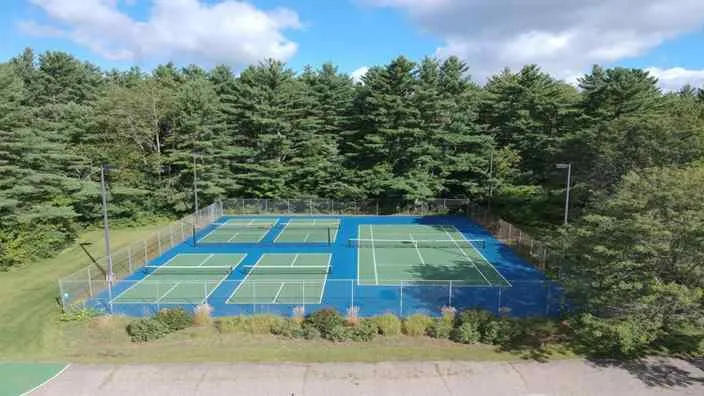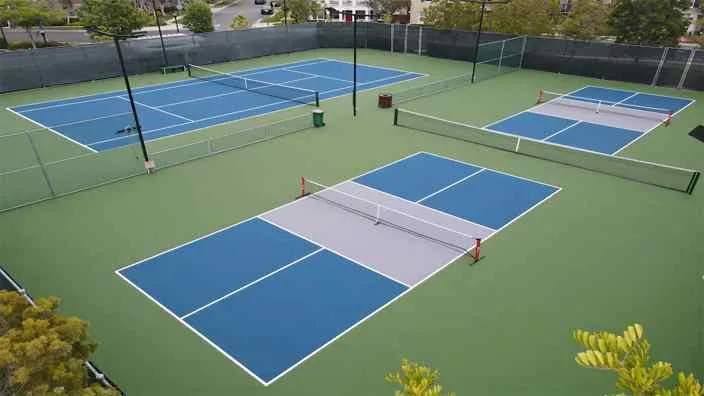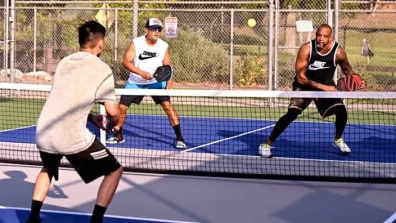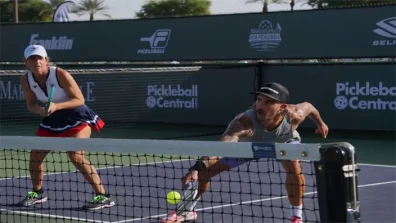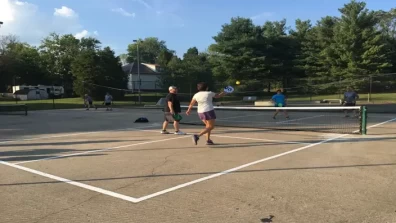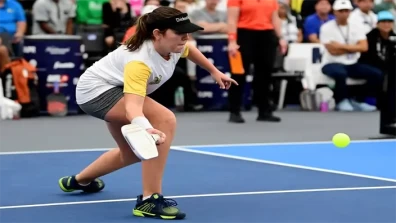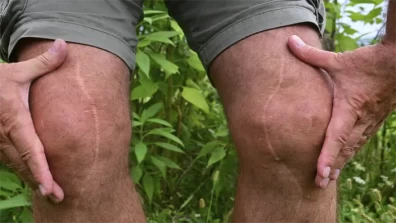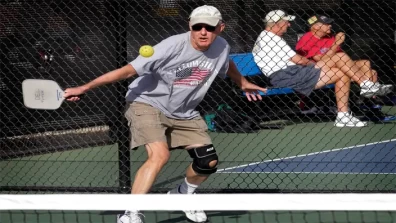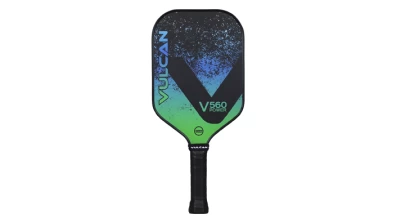The question of whether you can convert a tennis court into a pickleball court is not just a simple yes or no. It’s a dynamic issue with various aspects to consider. Whether you plan to convert a tennis court into a pickleball court at home, outdoors, or in a center, this article is for you.
We’ve explored the possibility of conversion, discussed potential outcomes, and highlighted essential regulations. Furthermore, we’ve examined the pros and cons and share strategies to avoid harming the tennis court. Striking a balance between these two beloved sports is crucial, ensuring both tennis and pickleball enthusiasts can enjoy their games without complications.
Table of Contents
Making Way For Pickleball On Tennis Court
Yes, you can play pickleball on a tennis court. However, there are some modifications and regulations to consider as the size of both courts differ, with the tennis court being larger than the pickleball court. So, the question that comes to mind is, how many pickleball courts fit on a tennis court? To answer simply, you can squeeze four pickleball courts on a tennis court with square corners.
Tennis courts typically measure 60’ x 120’ feet. A 3-foot-tall net split the court in half at the posts and 3 feet 6 inches in the middle. Pickleball courts, on the other hand, are considerably smaller. The standard dimensions of a 20’ x 44’ court are typically for playing pickleball, and a recommended 30’ x 60’ size is for overruns. These courts consist of two 20’ x 22’ foot sections separated by a 7-foot non-volley zone, often called the kitchen. Coming towards playing pickleball on a tennis court, you’ll need to do a few things to convert the tennis court.
Regulations & Guidelines For Conversion
- Lower The Net - Since pickleball nets are shorter than tennis nets, use a net clamp or bungee cord to bring the tennis net down to 34 inches at the center.
- Correct Court Dimensions - Tennis courts are typically larger at 60’ x 120’ feet, but you only need 30’ x 60’ feet to play pickleball. Therefore, you can fit up to four pickleball courts on a single tennis court with temporary nets.
- Get Approval - Always get permission from the court owners before making any changes.
- Use Different Lines - If the court is shared with tennis, consider adding pickleball lines in a different color. This is known as “blended lines.” The tennis lines should stay as is.
- Follow The Rules & Regulations - For permanent alterations, be sure to obtain a permit from your local authorities.
- Be Aware Of Challenges - Playing over the tennis net can leave ample space behind you if the ball goes past. This might be a hassle if you keep running to the fence from the pickleball baseline.
Does Pickleball Damage Tennis Court?
Yes, it can. A Gilroy, California case shows that applying temporary tape to create pickleball lines on tennis courts led to approximately $10,000 in damages. However, pickleball itself doesn’t usually harm tennis courts, as they’re built to handle tough tennis action. Being less intense, pickleball usually doesn’t strain the court. Problems crop up when temporary tape is used to mark pickleball lines on tennis courts. Moreover, there are other factors that contribute to the damage to tennis courts.
Courts can wear down from a lack of maintenance, algae, mold, poor drainage, and surface damage. To prevent further damage to the tennis court, use softer pickleballs designed for pickleball paddles with rounded edges to avoid paint scratching. Stick to designated pickleball areas as well. But, as there are a few drawbacks to converting a tennis court for a pickleball game, there are also advantages. So, you need to consider both the pros and cons.
Pickleball On Tennis Court: Pros & Cons
Here are the pros and cons of converting a tennis court into a pickleball court:
Pros
- Cost-Effective Solution - Using existing tennis courts can save money compared to building brand-new pickleball courts.
- Ready-Made Infrastructure - Tennis courts already have the necessary features like nets, fencing, and lighting, making them convenient for pickleball.
- Great For Temporary Setups - If you want to test the waters with pickleball, using tennis courts temporarily is a smart choice.
Cons
- Court Size Constraints - The larger size of a tennis court can pose difficulties in resizing and might affect gameplay.
- Safety Concerns - Different sizes and markings may cause confusion and safety hazards for players.
- Impact On Tennis Enthusiasts - Regular tennis players might not be thrilled about sharing their courts, leading to potential conflicts.
- Increased Wear & Tear On Tennis Courts - More usage can speed up the wear and tear of the courts. To avoid it, you can use a pickleball tennis court conversion kit.
Related Post: Pickleball Court Vs. Tennis Court
Using Conversion Kits
Pickleball tennis court conversion kits are designed to turn tennis courts into pickleball courts. They modify tennis courts to fit pickleball dimensions by adjusting the net, repainting lines, and setting up portable nets. The number of pickleball courts created depends on available space. In addition, conversion kits maximize existing infrastructure, making it cost-effective and appealing to a broader range of players.
These kits can be used for temporary or permanent conversions. But factors like court conditions, labor rates, and surface materials affect conversion costs, ranging from $5,000 to $40,000. Wakefield Park in Annandale, VA, is an example of a successful tennis court conversion into a pickleball court.
Frequently Asked Questions
Can I Make A Tennis Court Into A Pickleball Court?
Yes, you can definitely use a tennis court for pickleball, and it’s a pretty regular practice. A single tennis court can be converted into one to four pickleball courts. Tennis courts are typically 60 feet by 120 feet, while pickleball needs at least 30 feet in width and 60 feet in length.
Why Can't You Play Pickleball On A Tennis Court?
While you can play pickleball on a tennis court, there are a few challenges to watch out for. The main gripes include the confusing mix of lines from both sports and potential damage to the tennis court’s surface. There are also noise concerns, and sometimes, the pickleball players forget to adjust the nets back to regular tennis height.
How Many Pickleball Courts Fit On A Tennis Court?
You can place four regular pickleball courts on a tennis court, as long as it’s the standard 60’ x 120’ size and the corners are square. Each pickleball court should be 20’ x 44’ feet in dimensions for playing. While a total recommended size of 30’ x 60’ is required when you include some extra space around the court.
Which Sport Has The Same Size Court As Pickleball?
The doubles badminton and pickleball courts are the same size, both measuring 20’ x 44’ feet.
What Is The Difference Between Tennis & Pickleball Shoes?
The main difference between pickleball shoes and tennis shoes comes down to their midsole, grip, toe area, cushioning, and weight. Pickleball shoes are crafted to offer cushioning, solid traction, and support for movements in various directions. Whereas tennis shoes are geared more toward support and stability during side-to-side actions.
Conclusion
The answer to your question, “Can you play pickleball on a tennis court?” is a resounding yes. Tennis courts provide ample space, allowing you to fit up to four pickleball courts within. However, it’s essential to steer clear of temporary tape to mark pickleball lines and ensure you follow the rules and regulations.
For a more seamless transition, using a conversion kit is a wise choice. These kits maximize existing infrastructure, making it cost-effective and attractive to a broader player base. So, whether you’re a pickleball enthusiast or a tennis lover, with the right approach and equipment, sharing the court can be a win-win situation for all.


